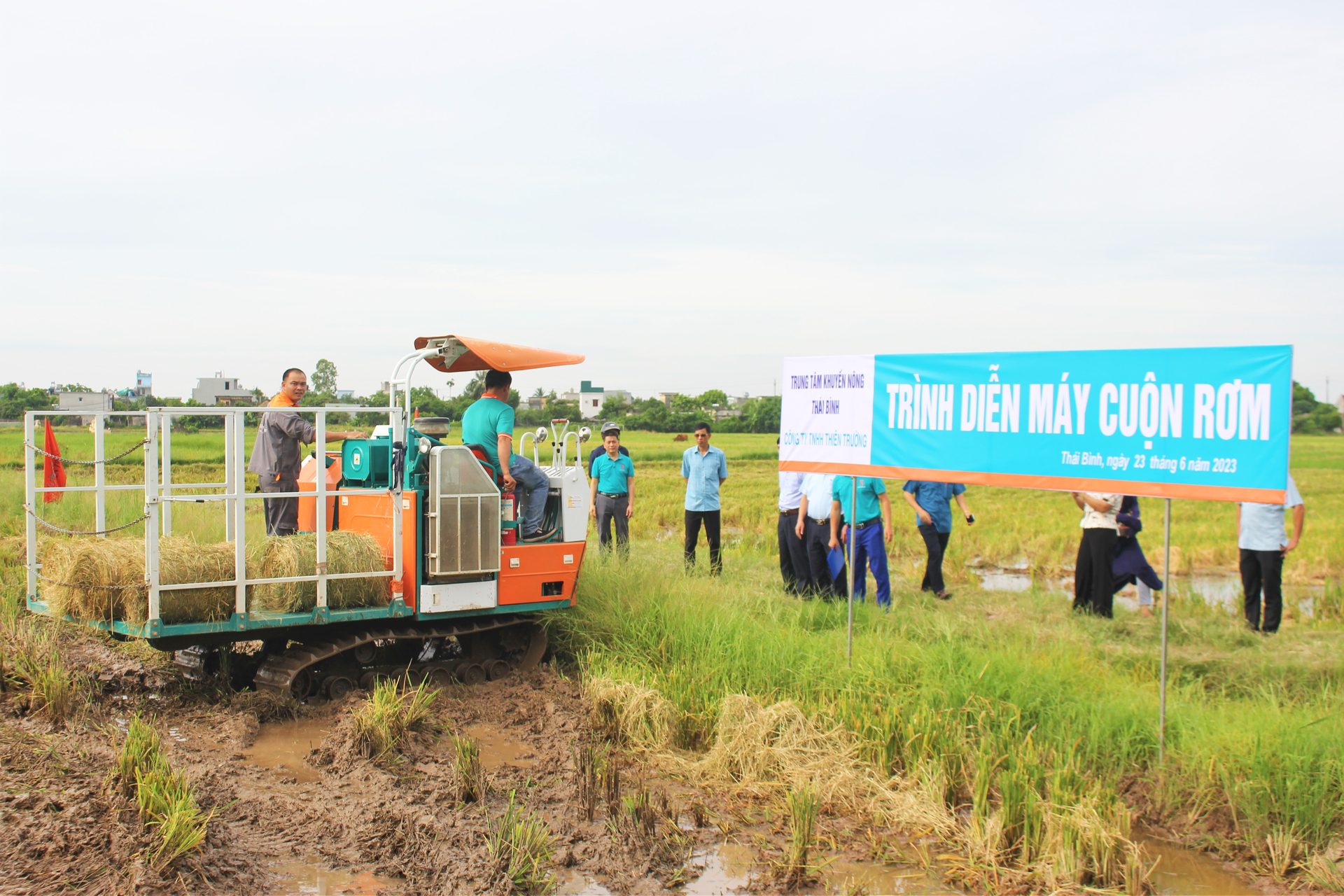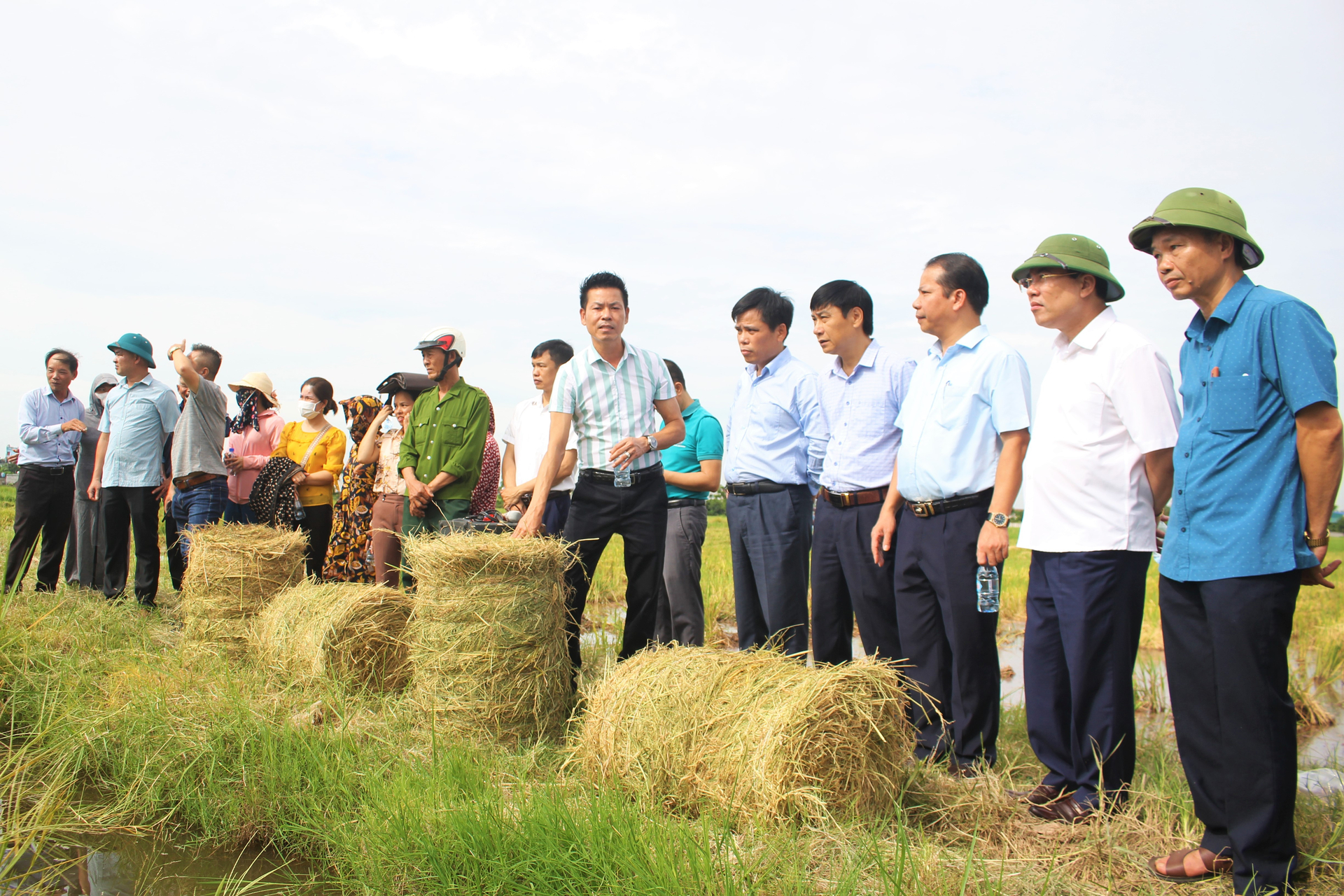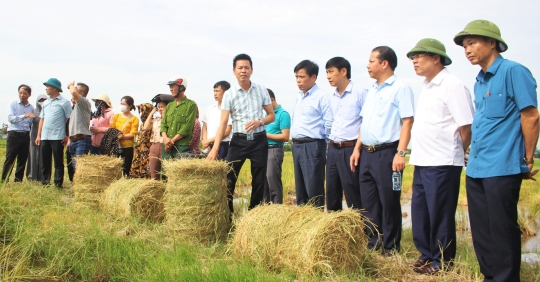Potential is left open
Thai Binh Agricultural Extension Center (TTKN) in cooperation with Thien Truong Co., Ltd. just organized a workshop to show farmers the versatile rice straw rolling machine.

Workshop to demonstrate a multi-purpose rice straw rolling machine for farmers involving a large number of state administrations, companies, cooperatives and rice production households. Picture: Trung Quan.
The workshop took place in Vu Quy township in Kien Xuong district (Thai Binh) with the participation of a large number of state administrations, companies, cooperatives and rice producing households in the region. District Kien
According to the Thai Binh Center for Agriculture and Rural Development, the average rice acreage across the province is about 155,000 hectares per year (the second largest in the Red River Delta). In order to produce 1 million tons of rice, the producing households also produce about 1.2 million tons of rice straw, of which the amount of straw is about 480,000 tons.
This amount of straw, if fully collected, can earn about 480-500 billion VND/year (about 200,000 VND/Sao/year) or it can be used as raw fodder for about 88,000 buffalo and cows. 1.55 times larger than the province’s existing buffalo and cow herd) or can produce about 150,000 tons of edible mushrooms worth about VND3,000 billion.
However, in recent years, only a small part of this straw is used as fodder for buffalo and cows, for mushroom production and as material for planting vegetable beds, etc., the rest is often used by people, burned or disposed of directly in the environment. Burning rice straw produces smoke and dust, which pollutes the air, obscures road users’ visibility, and causes the soil to become hardened and degraded.

The straw roll machine can roll 80-120 rolls/hour, which makes the straw collection fast. Picture: Trung Quan.
Some households also dump rice straw directly into rivers and canals, polluting water sources, blocking rivers and affecting irrigation. In particular, when a large amount of rice straw remains in the field and the transition period is short, organic poisoning of the next crop of rice is easy to occur if improperly handled.
In light of this, all levels and branches from provincial to municipal have intensified their information and propaganda work to gradually change people’s awareness and habits of handling rice straw. However, the re-collection is mainly done manually by the households, a very small part is collected with straw rolling machines.
It is estimated that the number of straw rolling machines in the whole province is about 20 to 30 units. In order to harvest the whole straw of more than 75,000 hectares of rice/crop, about 600 to 700 machines are required to roll straw synchronously with a capacity of each machine. from 5 – 6 ha/day or 1,000 – 1,100 straw roller machines on tractors with a capacity of 34 ha/day.
An effective tool to solve the post-harvest “problem”.
At the workshop, a representative from Thien Truong Co., Ltd. communicated that the straw roller machine is recognized as one of the most effective solutions to improve crop value on the same cultivated area, protect the environment and develop agriculture in a sustainable way.

Straw is rolled into individual weight bundles as needed for convenient transportation and storage. Picture: Trung Quan.
Self-propelled straw roll machine on rubber tracks with a container for more than 50 rolls. When you take the straw to the collection point, you just pull the hydraulic lever to dump it, so it doesn’t require a lot of labor. In addition, the straw rolling machine can roll the straw even in the rainy season and easily move in wet and muddy fields. The machine can roll 80 to 120 rolls/hour with an adjustable weight of around 12 to 18 kg/roll. With these advantages, the straw rolling machine speeds up straw collection and facilitates transportation and storage. This creates favorable conditions for households who wish to collect straw for sale or use, thereby increasing income.
Representatives of cooperatives and production households suggested that for the rice straw winding machine to work effectively, the machine supplier needs to solve many problems at the same time, such as the cost of purchasing the machine; operating personnel; Auxiliary vehicles for transporting straw and finished products; Storage bins for storage…
Therefore, in order for people to gradually approach this type of machine and put it into production, TTKN, the Ministry of Agriculture and Rural Development and relevant units must submit the testing and addition of a straw rolling machine to the relevant authorities. Rice straw in the list of agricultural machinery supported from the provincial budget, such as tillage machinery, planting machinery, harvesting machinery, etc. have been implemented.

Using a rice straw roller machine helps farmers solve many post-harvest problems, thus increasing their income. Picture: Trung Quan.
Also, invite companies to buy straw as a raw material for cultivation, husbandry, processing, etc. to build a chain of links to ensure all the rolled straw is purchased and people are stable. More confidence when investing in equipment purchases.
Mr Tran Minh Hung, director of Thai Binh Center for Agriculture and Rural Development, said that the collection and use of straw (crop by-products) as an input material for other agricultural production activities is of great importance in the field of agricultural production. Develop circular agriculture, protect soil and ecological environment, and add value to rice production.
With the background that farm labor tends to be shifted to industry and service sectors, straw roller machines are considered as one of the effective mechanization solutions to help manufacturing households solve their problems. Post-harvest accounting, income increase.

